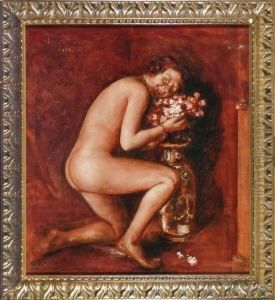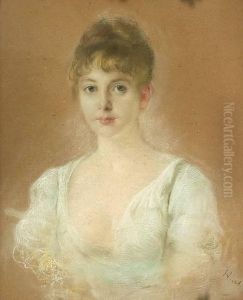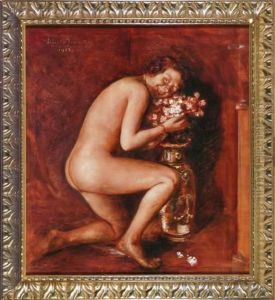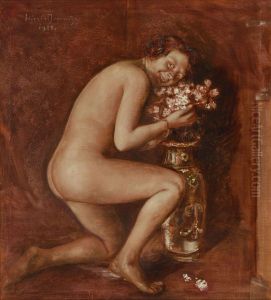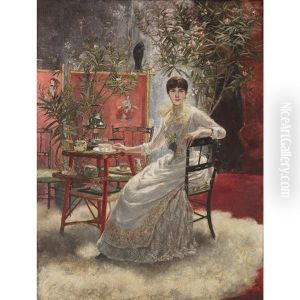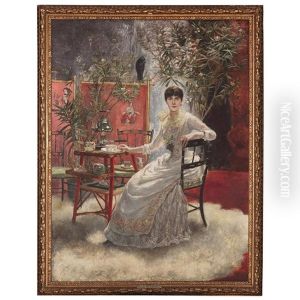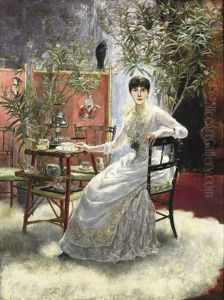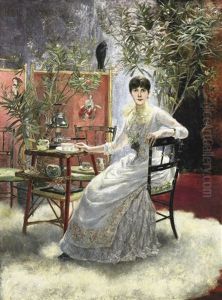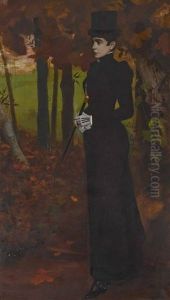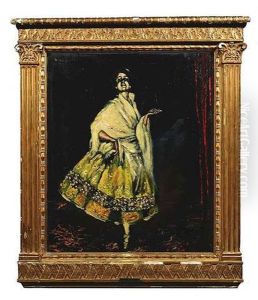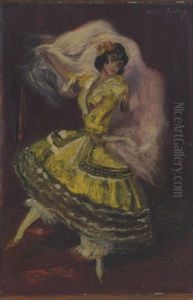Otto Hierl-Deronco Paintings
Otto Hierl-Deronco, born in 1879 in Munich, Germany, was a lesser-known artist and architect associated with the Jugendstil movement, which is the German variant of Art Nouveau. His work, though not widely recognized in the broader scope of art history, contributed to the artistic innovations of the late 19th and early 20th centuries, a period marked by a departure from historical revivalism in favor of more organic, flowing designs that often took inspiration from nature.
Hierl-Deronco's artistic journey began with his education. He studied at the Academy of Fine Arts Munich, which was a leading institution for the arts in Germany, particularly influential in the development of modern art movements. Throughout his career, Hierl-Deronco experimented with various mediums, including painting, graphic design, and architecture. His architectural works are noted for their graceful lines and decorative elements, embodying the aesthetic principles of Jugendstil.
In addition to his individual practice, Otto Hierl-Deronco was connected with other artists and designers of the time who were also exploring new forms and ideas. Despite the innovative nature of his work, Hierl-Deronco did not gain the same level of fame as some of his contemporaries, such as Gustav Klimt or Otto Wagner. His contributions, however, were part of the broader fabric of Jugendstil and helped to establish a distinctive German approach to Art Nouveau.
During his career, Hierl-Deronco also engaged in teaching, passing on his knowledge and aesthetic values to a younger generation of artists and architects. His legacy is preserved through his surviving works, which continue to be studied by those interested in the Jugendstil movement and the evolution of modern design in Germany.
Otto Hierl-Deronco passed away in 1962, leaving behind a modest but meaningful body of work that reflects the dynamic artistic explorations of his time. Although not a household name, his dedication to the principles of Jugendstil and his contributions to the field of architecture ensure that he remains a figure of interest to art historians and enthusiasts of early modern art.
